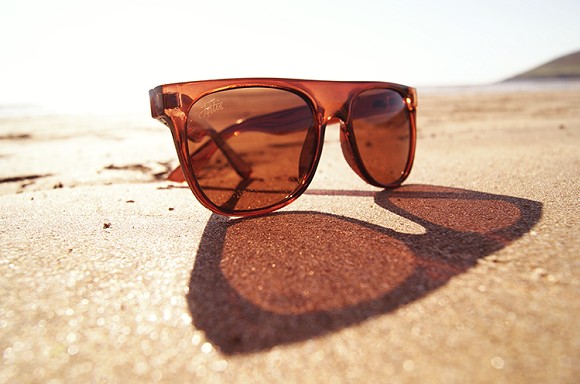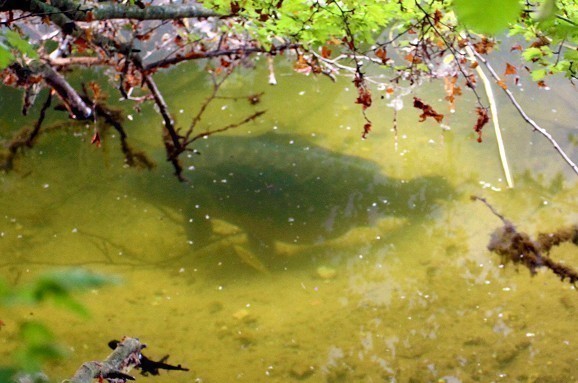
Polarised sunglasses explained
The carp angler’s most essential, essential, but there’s more to polarised sunglasses than meets the eye (excuse the bad pun). Spec expert, Darran Goulder fills us in...
Ask any serious angler their top three essential items they wouldn’t leave home without, and we’d bet all of them say, “polarised sunglasses”. Above all, watercraft (location) is the main string to any specimen hunter’s bow, and without polarised glasses you simply won’t be “on ‘em”.
“It’s surprising how many fishermen we speak to at the shows who still don’t use them or even know what they do,” states Darren Goulder, a sunglasses expert and co-owner of hit brand, Fortis. “It’s important to educate them, as quite simply, they will catch more fish with a pair in their armoury.”
The big questions...
How do polarised sunglasses work then?
“In short, light reflected from surfaces such as water, snow or other smooth surfaces is polarised and spreads only as horizontal and vertical waves. This means that instead of light being scattered in all directions in the usual ways, reflected light generally travels in a more horizontally oriented direction. This creates an annoying and sometimes dangerous intensity of light that we experience as ‘glare’.
“Polarised lenses contain a special filter that blocks this type of intense reflected light, reducing glare. The filter is created by heating and stretching a film over the lens resulting in the molecules becoming arranged in parallel fibres. These parallel fibres act like shutters on a blind, blocking light rays travelling in a horizontal direction (from flat surfaces like water, glass or a wet road). This gives the wearer a truer depiction of the objects in front of them.”
I see there are loads of different coloured lenses, so how do I know which ones to pick?
“Fortis Eyewear produce sunglasses in various lens options. Confusion about colours (or ‘lens tinting’ as it’s technically known) is something that can get quite baffling, although there are a few basics. There are literally hundreds of lens tints available from more neutral colours such as grey and blue right through to browns, ambers, greens and rose. Each has advantages for varying situations, so here is a general guide to the most popular colours used in the UK and why they are suited for particular situations…”
“Grey tints reduce the light intensity without affecting the colour spectrum. This is relatively neutral and clear which is why it is suitable for long-term wearing without putting an excessive load on the eye (eye strain). Grey tints are considered a great choice for medium to bright light conditions.”
“Brown tints offer substantial contrast definition. These are perfect for picking out objects in water and why the majority of anglers prefer this colour. They are great for low to bright light conditions, so would be considered the perfect all rounder for most angling situations.”
“Amber lenses are perfect for low light conditions i.e. the British weather! A very popular choice due to their ability to ‘lift’ colours and why you’ll find some of the best angler’s sporting them, as they are great for locating fish in dark corners and snags. Our top consultants all have a pair in their bag because should they be walking or fish spotting when fish are most active at dawn, they will brighten up the landscape and aid their ability to see in low light. Our wraps come in both Brown (24/7) and Amber (AM/PM) and some anglers buy a pair in both for the above reasons.”
What are the ‘mirror coatings’ all about then?
“This is a surface coating that offers an additional layer of protection and come in a myriad of colours adding an aesthetic quality to the lens. Again, these are available in a range of colours that help filter out certain light rays within the colour spectrum and is often why you see blue mirrored coating on lenses among the American angling community due to the richer, bluer nature of their waters. Fortis now produce two models featuring our own X Bloc coating: Bays and Lagoons. This additional glare block reflects the sun’s rays, which in turn makes your viewing experience sharper, and clearer.”
I follow you, but what about the actual material, what are they made from?
“Typically there are two types of lens material: glass and plastic. Recent technological developments have seen the latter take a dominant place within the sunglasses market due to their ability to be mass-produced in a more cost effective manner. This doesn’t necessarily mean that there has been a massive compromise on quality either, as plastics offer superb polarisation, impact resistance and are extremely lightweight. Glass, however, does offer a greater clarity of vision, chemical resistance and scratch resistance but is more expensive to produce and weighs more.”
Finally then, what does clarity of vision mean?
“Thinner lenses offer a better clarity of vision due to the fact that the light doesn’t have to pass through more material before it meets your eyes. However, if you make them too thin, they can break or warp in hot conditions. We work out the balance to ensure that all of our models are durable and also feature minimal distortion without comprising performance. This, combined with practical lenses and good value for money, ensures our glasses are perfect for all anglers of all abilities.
“Glasses can come with additional features too, so after you have picked your chosen frame and lens choice, there are a few other aspects to consider before parting with your hard-earnt cash. Take our Wraps for example, they feature side panels which prevent any sidelight coming through the frames, enabling you to see more clearly. If you’re up a tree, you can hold on firmly with two hands and you won’t need to shield your eyes from the sunlight if you have this model.
“Wraparound glasses can be prone to steaming/fogging due to them fitting so close around your face. In this instance, we manufactured holes in the top (hot air rises) to aid ventilation when pushing your barrow or doing laps of the lake in the morning sun. We have models and colours to suit everyone!”
For more information on polarised sunglasses and the complete Fortis range, head over to their website:





